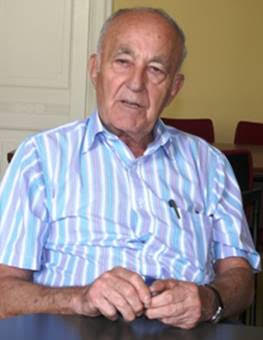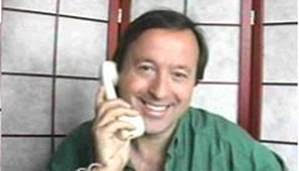
THE VOICE OF INTERNATIONAL LITHUANIA
|
VilNews has its own Google archive! Type a word in the above search box to find any article.
You can also follow us on Facebook. We have two different pages. Click to open and join.
|
Archive for June, 2013
- Posted by - (2) Comment

Prague centre is full of life!




EXPLORING EUROPE (7 of 10)
Warsaw, Kraków, Prague,
Bratislava, Budapest
Tour guide, writer and photographer: Aage Myhre
aage.myhre@VilNews.com
VilNews is on its way around Europe!
Our today's journey begins in Warsaw. From there we drive south in Poland,
|
||||||||||||||||||||||
|
Today’s journey:
Today’s journey goes through former Warsaw Pact countries
Poland is a country in Central Europe bordered by Germany to the west; the Czech Republic and Slovakia to the south; Ukraine, Belarus and Lithuania to the east; and the Baltic Sea and Kaliningrad Oblast, a Russian exclave, to the north. The total area of Poland is 312,679 square kilometres (120,726 sq mi), making it the 69th largest country in the world and the 9th largest in Europe. Poland has a population of over 38 million people,[6] which makes it the 34th most populous country in the world and the sixth most populous member of the European Union, being its most populous post-communist member. Poland is a unitary state made up of sixteen voivodeships. Poland is a member of the European Union, NATO, the United Nations, the World Trade Organization, the Organisation for Economic Co-operation and Development (OECD), European Economic Area, International Energy Agency, Council of Europe, Organization for Security and Co-operation in Europe, International Atomic Energy Agency and G6. The establishment of a Polish state is often identified with the adoption of Christianity by its ruler Mieszko I in 966, over the territory similar to that of present-day Poland. The Kingdom of Poland was formed in 1025, and in 1569 it cemented a long association with the Grand Duchy of Lithuania by signing the Union of Lublin, forming the Polish–Lithuanian Commonwealth. The Commonwealth ceased to exist in 1795 as the Polish lands were partitioned among the Kingdom of Prussia, the Russian Empire, and Austria. Poland regained its independence as the Second Polish Republic in 1918. Two decades later, in September 1939, World War II started with the Nazi Germany and the Soviet Union invasion of Poland. Over six million Polish citizens died in the war. Poland reemerged several years later within the Soviet sphere of influence as the People's Republic in existence until 1989. During the Revolutions of 1989, 45-year long communist rule was overthrown and the democratic rule was re-established. That gave foundations to modern Poland, constitutionally known as the "Third Polish Republic". Despite the vast destruction the country experienced in World War II, Poland managed to preserve much of its cultural wealth. There are currently 14 heritage sites inscribed on the UNESCO World Heritage list in Poland. Since the end of the communist period, Poland has achieved a "very high" ranking in terms of human development and standard of living.
Warsaw - the city that rose from the ashes after World War II Warsaw is the post-war bird phoenix. Barely 20% of the city was left after the war’s bombs and fires. Most of Warsaw was in ruins. After the war, under the Communist regime that was installed by the Soviet conquerors, major residential projects were completed in order to solve housing shortage. Mostly through the use of large, prefabricated concrete elements. Gray, dreary suburbs as in the rest of the post-war Eastern Europe. Fortunately, many of the city's historic streets, buildings and churches were restored to their original shapes.
Lublin – the city where Poland and Lithuania signed their 1569 Union Treaty
Kraków - culture at Europe's largest medieval town square Kraków has grown from a Stone Age settlement to become Poland's national academic and artistic centre. Medieval Krakow was surrounded by a 3 km long city wall with 46 towers and seven gates. The current town plan was drawn up in 1257 after the destruction of the city during the Tatar invasion in 1241 Union of Kraków and Vilnius of 1499, also known as the Vilnius Protocol was an important agreement in the Polish-Lithuanian union. So it was indeed these two towns that played key roles during the long partnership between these nations. Krakow was relatively undamaged by WWII, and stands today as one of the most beautiful and genuine Eastern Europe has to offer. In 1978, Karol Wojtyla, archbishop of Krakow, raised by the Vatican as Pope John Paul II, the first Slavic pope ever and the first non-Italian Pope in 455 years.
The Czech Republic is a landlocked country in Central Europe. It has a population of 10.5 million. The country is bordered by Germany to the west, Poland to the north, Austria to the south and Slovakia to the east. Its capital and largest city, at 1.3 million inhabitants, is Prague. It is a pluralist multi-party parliamentary representative democracy, a member of the European Union, NATO, the OECD, the OSCE, the Council of Europe and the Visegrád Group. The Czech state, formerly known as Bohemia, was formed in the late 9th century as a small duchy around Prague, at that time under dominance of the powerful Great Moravian Empire (which reached its greatest territorial extent during the reign of Svatopluk I from the House of Mojmír). After the fall of the Empire in 907, the centre of power was transferred from Moravia to Bohemia, under the Přemyslids. During the rule of Přemyslid dukes/kings and their successors, the Luxembourgs, the country reached its greatest territorial extent (13th–14th century). Life in the country was significantly affected by the Hussite wars, during which it faced economic embargo and crusades from all over Europe. Following the Battle of Mohács in 1526, the Crown of Bohemia was gradually integrated into the Habsburg monarchy as one of its three principal parts alongside the Archduchy of Austria and the Kingdom of Hungary. The Bohemian Revolt (1618–20) led to the further centralization of the monarchy including forced recatholization and Germanization. During radical reforms in the 18th century the Bohemian Crown was even de facto abolished (1749). In the 19th century the Czech lands became the industrial powerhouse of the monarchy and the core of the Republic of Czechoslovakia which was formed in 1918, following the collapse of the Austro-Hungarian empire after World War I. After the Munich Agreement, Polish annexation of Zaolzie and German occupation of Czechoslovakia and the consequent disillusion with the Western response and gratitude for the liberation of the major portion of Czechoslovakia by the Red Army, the Communist Party of Czechoslovakia won the majority in the 1946 elections. In a 1948 coup d'état, Czechoslovakia became a communist-ruled state. In 1968, the increasing dissatisfaction culminated in attempts to reform the communist regime. The events, known as the Prague Spring of 1968, ended with an invasion by the armies of the Warsaw Pact countries (with the exception of Romania); the troops remained in the country until the 1989 Velvet Revolution, when the communist regime collapsed. On 1 January 1993, Czechoslovakia peacefully dissolved into its constituent states, the Czech Republic and the Slovak Republic. The Czech Republic is the first former member of the Comecon to achieve the status of a developed country according to the World Bank. In addition, the country has the highest human development in Central and Eastern Europe, ranking as a "Very High Human Development" nation. It is also ranked as the third most peaceful country in Europe and most democratic and healthy (by infant mortality) country in the region.
My choice is Prague and Václav Havel
Prague has been a political, cultural and economic centre in Europe and especially central Europe through 1100 years. For centuries, during the Renaissance, the city was the permanent seat of the two Holy Roman emperors and thus also the capital of 'The Holy Roman Empire'. Later Prague an important city in the Habsburg monarchy and the Austro-Hungarian Empire. "Prague is like a textbook of styles," I think as I walk around in the Old Town. Here stand a thousand years of architectural gems side by side. Good architecture from the medieval, Renaissance and Baroque. Most of these beautiful buildings are now carefully renovated and restored. 'The city with the golden spire' is one of the nicknames this beautiful city has received. Church steeples and bell towers as far as I can see. The most famous landmark in Prague, the Charles Bridge, has carried people on its curved arches over the Vltava river for hundreds of years. It was commissioned by the Roman Emperor Charles IV in 1357 to replace the old bridge that had been destroyed by a flood in 1342. This part of Prague is now a pedestrian paradise, where all the tourists are wandering around and enjoying the sight of the river, the beautiful architecture and each other. No doubt that Prague is attractive and breathtaking beauty. Probably the number one tourist city in Eastern Europe!
The Slovak Republic (short form: Slovakia) is a landlocked state in Central Europe. It has a population of over five million and an area of about 49,000 square kilometres (19,000 sq mi). Slovakia is bordered by the Czech Republic and Austria to the west, Poland to the north, Ukraine to the east and Hungary to the south. The largest city is the capital, Bratislava, and the second largest is Košice. Slovakia is a member state of the European Union, NATO, United Nations, OECD and WTO among others. The official language is Slovak, a member of the Slavic language family. The Slavs arrived in the territory of present day Slovakia in the 5th and 6th centuries during the migration period. In the course of history, various parts of today's Slovakia belonged to Samo's Empire (the first known political unit of Slavs), Principality of Nitra (as independent polity, as part of Great Moravia and as part of Hungarian Kingdom), Great Moravia, Kingdom of Hungary, the Austro-Hungarian Empire or Habsburg Empire, and Czechoslovakia. A separate Slovak state briefly existed during World War II, during which Slovakia was a dependency of Nazi Germany between 1939–1944. From 1945 Slovakia once again became a part of Czechoslovakia. The present-day Slovakia became an independent state on 1 January 1993 after the peaceful dissolution of Czechoslovakia. Slovakia is a high-income advanced economy with one of the fastest growth rates in the European Union and the OECD. The country joined the European Union in 2004 and the Eurozone on 1 January 2009. Slovakia together with Slovenia and Estonia are the only former Communist nations to be part of the European Union, Eurozone, Schengen Area and NATO simultaneously. The Slovak Republic and the Czech Republic went their separate ways after 1 January 1993, an event sometimes called the Velvet Divorce. Slovakia has remained a close partner with the Czech Republic. Both countries cooperate with Hungary and Poland in the Visegrád Group.
Bratislava – home of Škoda Bratislava is the capital of Slovakia and, with a population of about 431,000, also the country's largest city. Bratislava is in southwestern Slovakia on both banks of the Danube River. Bordering Austria and Hungary, it is the only national capital that borders two independent countries. Bratislava is the political, cultural, and economic centre of Slovakia. It is the seat of the Slovak president, the parliament, and the executive branch of the government. It is home to several universities, museums, theatres, galleries and other important cultural and educational institutions. Many of Slovakia's large businesses and financial institutions also have headquarters there. The history of the city, long known by the German name Preßburg, has been strongly influenced by people of different nations and religions, namely by Austrians, Czechs, Germans, Hungarians, Slovaks, and Jews. The city was the capital of the Kingdom of Hungary, a part of the larger Habsburg Monarchy territories, from 1536 to 1783 and has been home to many Slovak, Hungarian, and German historical figures. More than 60% of all direct foreign investments in Slovakia are located in the Bratislava Region. The car manufacturer Volkswagen was established in Bratislava in 1991 subsequent to acquiring Škoda Auto and has expanded since. Currently, its production focuses on sport utility vehicles, which represent 68% of all production. VW Touareg is finished and Porsche Cayenne and Audi Q7 are partially built there. In recent years service and high-tech oriented businesses are thriving in Bratislava. Many global companies, including IBM, Dell, Lenovo, AT&T, SAP, and Accenture, are building their outsourcing and service centres or have plans to build in near future here.
Hungary is a landlocked country in Central Europe. It is situated in the Carpathian Basin and is bordered by Slovakia to the north, Ukraine and Romania to the east, Serbia and Croatia to the south, Slovenia to the southwest and Austria to the west. The capital and largest city is Budapest. Hungary is a member of the European Union, NATO, the OECD, the Visegrád Group, and is a Schengen state. The official language is Hungarian, also known as Magyar, which is part of the Finno-Ugric group and is the most widely spoken non-Indo-European language in Europe. Following a Celtic (after c. 450 BCE) and a Roman (9 CE – c. 430 CE) period, the foundation of Hungary was laid in the late 9th century by the Hungarian ruler Árpád, whose great-grandson Saint Stephen I was crowned with a crown sent by the pope from Rome in 1000 AD. The Kingdom of Hungary lasted for 946 years, and at various points was regarded as one of the cultural centres of the Western world. After about 150 years of partial Ottoman occupation (1541–1699), Hungary was integrated into the Habsburg Monarchy, and later constituted half of the Austro-Hungarian dual monarchy (1867–1918). A great power until the end of World War I, Hungary lost over 70 percent of its territory, along with one third of its ethnic population, and all its sea ports under the Treaty of Trianon, the terms of which have been considered excessively harsh by many in Hungary. The kingdom was succeeded by a Fascist regime, and then a Communist era (1947–1989) during which Hungary gained widespread international attention during the Revolution of 1956 and the seminal opening of its border with Austria in 1989, thus accelerating the collapse of the Eastern Bloc. The present form of government is a parliamentary republic, which was established in 1989. Today, Hungary is a high-income economy and a regional leader in some respects. Hungary is one of the thirty most popular tourist destinations of the world, attracting 8.6 million tourists a year (2007). The country is home to the largest thermal water cave system and the second largest thermal lake in the world (Lake Hévíz), the largest lake in Central Europe (Lake Balaton), and the largest natural grasslands in Europe. The people of Hungary (the Magyar) have been known as great horsemen for centuries. As invaders crossed or conquered Hungary over the centuries, they brought with them their fine Turkoman (ancestors of today's Akhal-Teke), Iberian (ancestors of Andalusians and Lusitanos), and Arabian horses. These horses were crossed with the hardy little local horses to create a superior mount for the Hungarian cattlemen.
The Hungarian language has Finnish-Siberian origin!
Budapest was founded by the Romans around 89 AD
I am driving into Budapest a hot summer afternoon. We have had a few wonderful days in Hungary’s holiday paradise at Lake Balaton, Central Europe’s largest lake. Drunk good Hungarian wine and enjoyed the delicious water. But now it is the capital that counts. Infinite beautiful Budapest, Buda on one side, Pest on the other side of the slow Danube River which divides the city into two, with its beautiful water surface..
|
Szeged in South Hungary – where the 1956 revolts started
|
|
Ruszkik, haza! Russians, go home! The 1956 revolution in Hungary gave hope - but ended in disillusionment. This was what Dénes Fejér (78) told me when I met him here in the University Aula in his South-Hungarian hometown Szeged. Mr. Fejér was himself a 23-year old journalist, actively participating when the Hungarian uproar against the Soviet rulers started exactly here 55 years ago. I asked him to confirm that the 1956 revolution in Hungary started here in the University Aula in the Szeged University, “Yes, this is correct,” he says. “55 years ago, on the 16th of October, 1956, students from our Szeged town founded the youth organisation of MEFESZ (Hungarian Student Organisation). This event could be considered as the very first step of the revolution because in Hungary, at that time, after over ten years of Communist post war regime, only state founded and supported organisations could be established in a legal way.”
|
“The Szeged initiative could be seen as the first crack on a dam where water is about to pour through. Of course, you don’t immediately realise when you see a small stream of water; that what follows it is going to overwhelm you. The Communist leadership did not see right away what actually was about to happen, as they did not expect such a massive force appearing in just a few days.”
Dénes Fejér, who was 23 when the revolt started, stands here in the Aula that looks more or less the same as it did in 1956, demonstrating how things started evolving exactly here that October evening 55 years ago.

Hungarians gather around the head of the toppled Stalin Monument in Budapest 1956.
I ask Dénes Fejér to explain more about the 1956 revolt that started here in Szeged:
You were yourself present in that Aula meeting, and if I understand you correctly, this meeting became a fateful event (among several other developments in those days) which led inevitably to the outbreak of the revolution. It was the first meeting after World War II where questions were not pre-arranged slogans glorifying the regime, but where - because of the insistence of the audience - everyone was allowed to speak, and raise questions. What would you say were the most significant things happened at that assembly?
For two years after the end of the war in 1945, there was a plural political system in Hungary. Different political parties existed, and in the 1945 general elections the Independent Smallholder and Civil Party received absolute majority with 54% of the votes and the Communist Party only received 17%. Stalin realised that the people of Hungary did not want to embrace its system. The 1947 elections were already fraudulent and the Communist forces won. In 1948 the Social democratic Party was forcibly incorporated into the Communist party. The general wave of terror appeared only after this time. Forced nationalisation was started with businesses, commercial institutions, industrial entities and later, even private property like houses. A terror organisation was created within the Internal Ministry, called the AVO (State Security Authority) which later became an independent entity, having its own rules and methods.
This was the background where the MEFESZ was established, as the very first independent organisation in Communist Hungary. The programme and its demands were summarised in twenty points of the there are a few that are interesting. These included the request for open and free debates, the open trial of guilty Communist functionaries, the abolishment of death penalty in political cases, democratic elections, freedom of speech, and the that the 15th of March, the Commemoration Day of the 1848 Revolution should become an official national day. As you can see, these conditions and demands are natural in a free country but were unknown and unthinkable in a dictatorship. Although not part of the twenty points, another demand was phrased by the participant of the meeting. This was later a key phrase of the revolution: Russians, go home! The most fundamental demand was for the truth, that is to say that the leaders of the country should not lie and should not make the young people and the population lie. Telling the truth in Hungary at that time meant sever prison sentences.
To my knowledge, the assembly started as a rather innocent gathering where the students simply asked: “Why are the Soviet troops still stationed in our country?”, but ended with a the clear demand: “Ruszkik, haza!” - “Russians, go home!” From such a radical manifestation of the demands, you must have known that this was about to become dangerous?
The whole meeting started as a regular Communist youth organisation meeting. The Communist youth leaders gathered before it and reviewed the demands of the MEFESZ leaders, like András Lejtényi. When they learn the radical nature of these, they became frightened and left immediately for higher authority, the Communist party representatives at the university. Then the MEFESZ leaders went to meet the gathered students, read their demands, and the MEFESZ had the day!
“There was a general feeling of freedom among the participants. Fear disappeared. Saying the truth was a standard, normal thing during the event that caused happiness and joy among the audience.”
Didn‘t you realise that, according the Soviet system of those days, your collective name was "Shut up!" Did you not know that the Aula microphones were only for the Party collaborators and that nobody else were supposed to talk?
Nobody thought of ‘Shut up!’ at that time. After the first few words, there was a general feeling of freedom among the participants. Fear disappeared. Saying the truth was a standard, normal thing during the event that caused happiness and joy among the audience. The principle of ‘Shut up!’ had accumulated an amount of pressure in everyone that just erupted then. The age of ‘sober thoughts’ ended and the demand of freedom and truth became prevalent for the university youth.
You were yourself working as a journalist those days, and on the 23rd of October the newspaper “Delmagyarorszag” published your article called “Az igazsag keresesenek utjan”. What was the essence of this article and what reactions did you get?
This article, titled the ways of finding the truth, summarised what I have just explained above. It is very typical that we were not even sure whether the article would appear at all. The official, Communist newspaper Délmagyarország reported the event but left out the most important aspect which was the break of the dam, the shedding of the Communist oppression!
The period of hope to win over the mighty Soviet Union by peaceful measures, however, did not last long, and soon fights started spreading all over Hungary and the revolution began before your eyes. How will you describe this outcome of your efforts from the Aula assembly?
The main fighting happened in Budapest. This was the obvious and visible sign of the revolution. The fighting, the combat on the streets. The AVO, the armed troops and the Soviet soldiers were all surprised that ‘here they shoot back’. It was believed that a demonstration of force with tanks on the street would frighten people and prevent the escalation of the events, thus helping the consolidation of the Communist dictatorship. It didn’t happen like that.
Probably the Hungarian national character contributed to this as well. The courage to start again, to love one’s country, the national tradition of not giving in to slavery.
The revolutionaries of Budapest used bottles filled with petrol against tanks. They had no heavy weapons or anti-tank artillery. They fixed a burning piece of rag on the bottle and tossed it to the moving vehicle. The burning liquid turned the steel monsters into burning coffins. When the Soviet soldiers were abandoning their vehicles, they became easy preys to the weapons of the fighters.
There was an interrelation between the demands of the Szeged students, the fighting in Budapest and the revolutionary state nation-wise. The mental preparation rallied the fighters. The machine guns and the words were equally weapons of the revolution. Words changed things without bloodshed. From the smallest villages in Hungary to any institution or organisation, everyone of them had revolutionary councils. They replaced the very often incompetent previous leadership whose only added value to the system was their loyalty to the oppressing regime. The highest authority in the Communist state, the Central Committee and the Political Committee was simply dismissed. Instead of them reliable and trustworthy people were elected by the population or members of institutions or organisations. With open or secrets ballots. I was elected by a secret ballot to be on the workers’ council of the press in Szeged, and on the city’s revolutionary council.
I think this was the real result of the revolution. Replacing the old, Soviet puppets, the Communist leadership, and raising new, honest people into the power. This was created by the synergy of the students’ wishes and of the fighting in Budapest.
“For those who have never lived in oppression, in fear and in deprivation, for those who, on a daily basis, enjoy freedom and the rights of liberty, they probably don’t really know what freedom means for a prisoner.”
It has been said that something nearly supernatural stirred the hearts, minds and consciousness of the Hungarian people those days. Those shared feelings with friends and strangers must have been very special?
This special, disturbing experience is not difficult to describe for those who lived through it. The beautiful memories must be recalled from the past half-century. For those who have never lived in oppression, in fear and in deprivation, for those who, on a daily basis, enjoy freedom and the rights of liberty, they probably don’t really know what freedom means for a prisoner. I believe that it was this everlasting desire for freedom that prevailed back then. It was as if we were not even walking on the face of the Earth, as if floating in air. The communication changed among people, they were smiling to each other. They were nice, understanding towards each other. We even believed that the ‘guards’, our oppressors could change because they would realise that it is, in fact, better to live like this, free. It is probably also true that the experience of freedom created delusions.
By mid November 1956, it became evident that your revolution was lost. Not only the street fights, but also the lengthy demands of the students, which were fully supported by the whole society, were not going to be met. Instead, more and more of reprisals and arrests happened and an air of bitter disillusionment began to replace the heady days of the victorious revolution. How would you describe these days?
In the first days of November, it became obvious that the revolution had failed. Not in its results, not in its memories, not in its principles but in its survival. It was not our weakness but the overwhelming Soviet military power that defeated it. The twelve days a freedom turned into a totally different direction. In a few days we suddenly had to realise that those who had pretended to be with us till the 4th of November in 1956, turned into bloodthirsty puppets of the occupying forces and lost their human faces, becoming willing executioners.
The new puppet regime with Soviet arms behind it could only gradually strengthen its own position. They were expecting results, agreements, and waiting for their supporters t show once again. This started very slowly with the dismissed Communist leaders and members appearing again and again. Once they were feeling safe, the brutal punishment started.
We were hoping that they might have learnt their lesson, that we could not be treated the same way as we had been treated for nine years before the revolution. This was not the case, they continued everything in much the same way as it had been before. Everything came back, the deportation camps, the beatings, the prisons, the torture. Hungary again became a prison and we again humiliated prisoners.
It took some time before the Soviet rulers of your country were able to close the borders completely, and Austria was very willingly letting thousands of refugees cross into their country. You decided not to leave, why was that?
It became obvious that for those who had participated in the revolution, there was no place in Hungary any more. And many of them indeed left the country. Maybe some left because of fear, some because of adventure or new possibilities. Almost 200.000 people left the country. One of my best friend left who is currently living in New York while I was kept in a Soviet military prison in Eastern Hungary. Another friend of mine, who was briefly arrested with me, was inviting me to go to France.
It had never occurred to me that I could or would leave. Never, for a moment. I knew that I had account for all my activities eventually, and I was hoping that my life would be spared. During the revolution I did not fight, did not kill anyone. In my captivity Major Zokov, the Russian officer was interrogating me about all these things. Ha was trying to convince me that we were counter-revolutionaries while I was trying to convince him that we were revolutionaries. We couldn’t convince each other of course. I do not recall any fear gripping me, when, together with seven of my colleagues, I was transported in an ambulance, escorted by two armed armoured personnel carriers. I was wearing a white shirt and, when we were disembarked at the main square of Csongrád to be taken to the nearby hills, I remember thinking that anyone could easily recognise the white on a corpse, and might be able to inform my mother about my fate. I was not executed, but taken to Debrecen to the Soviet military airfield.
After I was released from prison, I did not want to leave. I couldn’t leave my country. I would not replace Hungary for any other place. I have seen a few peaceful spots in the world where life could be different than here. Once a Hungarian poet has said that for a Hungarian patriot ‘whether your faith may be blessed or cursed, here [ie. in Hungary] you must either live or die’. This is a moral command for me.
Some of your fellow students were executed and the Soviet jails were filling up during the next few months. You were among them arrested, hence it would be interesting to hear your personal story from the time after the revolution was so brutally crushed?
In the spring of 1957 I was arrested again, this time by the Hungarian political police. But before that an interesting episode happened in my life. When I was released from the Soviet prison, in February I returned to Szeged where I was approached by the newly organising Communist party, through two veteran leaders, Vince Bite and Károly Csíszár. I used to know Uncle Vince, since when I was ten to twelve, I used to be his helper in playing bowling at the beach. They told me to become member of the MSZMP [the newly formed Communist party] because I had been selected to be chief editor of the Délmagyarország newspaper. I had three days to consider their offer. I turned it down. Have you given it enough thoughts? Uncle Vince asked me. I have, I told him. Well, I hope you won’t regret it, he answered.
In two months time, I was arrested. I was interned. The whole thing became only a little bit clearer when I was released after one year. The temporary imprisonment that required no court verdict, could be prolonged indefinitely after every six months. When I was released, I was only allowed to do manual labour, only as a non-qualified worker, despite having a university degree with a certificate that allowed me to teach. My driving license was withdrawn, my reserve officer rank of the army was taken away, I did not get a passport, and could not travel abroad. As I recall, it did not really affect me because after finishing secondary school, I went to work on the Tisza bridge and learnt the craftsmanship of carpenters. This enabled me to work with my own two hands, and solved my financial problems.
What was difficult was the social exclusion. When my friends saw me on the streets, they went to the other side. Nobody dared speaking to me, or to be seen in the company of a convicted ‘counter revolutionary’. I was living with my mother and with my elder sister because I had lost my elder brother who had died in Russian captivity in the war.
During the sixties the terror had waned a little bit. I was allowed to teach in elementary school, although only subjects that were practical based, handcrafts. On regular basis a political officer appeared to check on me, and to try to make me work with them as an agent. I refused, and eventually got fed up with it all, and I returned to the construction industry. In the end I became a foreman, then a project manager. I was applying for eight years to the Szeged university law faculty but was always turned down. In the late 80s I was invited to be as chief editor of one of the first independent publishers. This was already the end of the Kádár-regime [János Kádár was the leader of Communist Hungary after 1956, till 1989. The period between 1956 and 1989 was often referred as the Kádár-regime.
“It was only after many years that we learnt that the USA and the Great Britain informed the USSR that they would not oppose their intervention in Hungary.”
The governments of the free world watched your Hungarian Revolution with deep admiration even if none of them seriously considered providing military support, nor condemnation strong enough to stop the brutal actions of the Soviet Union. How do you view the behaviours of the Western countries those days?
The Western world provided enormous help to those almost 200.000 Hungarians who left the country. Those who went not as adventurers were appreciated by their new countries. Among the refugees you can find people who still come back to Hungary and who in fact, have two countries now. They have no roots, and their children have departed from Hungary for good.
The Western influence that we had in the days of the revolution was deceiving. It was only after many years that we learnt that the USA and the Great Britain informed the USSR that they would not oppose their intervention in Hungary.
Radio Free Europe was continuously encouraging the fighters to carry on because they were promised foreign help. This has led me to conclude that if it succeeds, if we had national local government in Szeged, I would suggest to change the name of Roosevelt Square in Szeged (like it was changed from Stalin Square) as I cannot support a liar, a friend of Soviets, even if he had once been the President of the USA.

Roosevelt Square in Szeged. The inscription lauds Franklin for his stand against
Fascism. Dénes Fejér, however, wants to change the name of the square.
“I cannot support a liar, a friend of the Soviets, even if he had been once
President of the USA,” he tells me.

Dangerous undertows erode the stability
of Central and Eastern Europe
An article by Stan Backaitis, Washington DC
- Bookmark :
- Digg
- del.icio.us
- Stumbleupon
- Redit it
- Posted by - (0) Comment
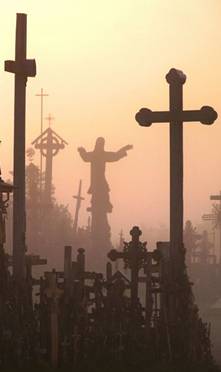
Mysterious hill of crosses where pilgrims actually believe Christ can perform miracles
- The tradition of leaving crosses began after an uprising against the Russian tsar was put down in 1831
- Relatives of the dead rebels, with no bodies to bury, instead left crosses on this hill to commemorate their fallen
- Today there are some 200,000 crosses, carvings and shrines at the site made out of everything from wood to metal
The Hill Of Crosses in northern Lithuania has been a site of pilgrimage for hundreds of years.
Consisting of a hill bristling with hundreds of thousands of crosses of every size and design, it is a powerful testament to religious devotion - where pilgrims descend to plead with Jesus for miracles.
The tradition of leaving crosses began after an uprising against the Russian tsar was put down in 1831.
Read more...
- Bookmark :
- Digg
- del.icio.us
- Stumbleupon
- Redit it
- Posted by - (9) Comment
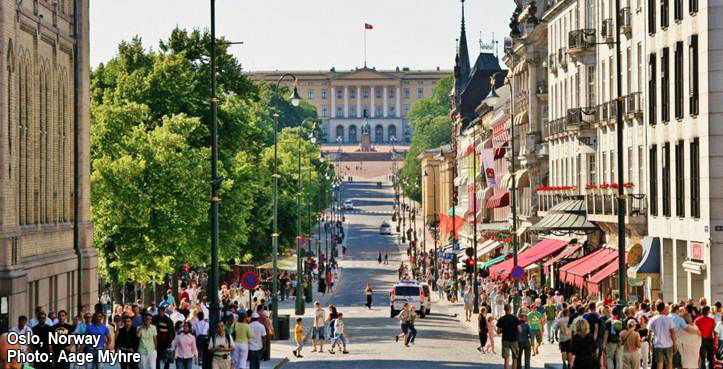




EXPLORING EUROPE (6 of 10)
Scandinavia & Finland
Tour guide, writer and photographer: Aage Myhre
aage.myhre@VilNews.com
VilNews is on its way around Europe!
Today's tour starts in the far north of Norway, and continues south |
|
|
Our today’s journey: |
|
|
|
Norway – oil, fjords, fish & ships |
|
|
Norway, officially the Kingdom of Norway, is a Nordic unitary constitutional monarchy, with King Harald V as its head of state, whose territory comprises the western portion of the Scandinavian Peninsula, Jan Mayen, and the Arctic archipelago of Svalbard. Norway has a total area of 385,252 square kilometres (148,747 sq mi) and a population of about five million. Norway's extensive coastline, facing the North Atlantic Ocean and the Barents Sea, is home to its famous fjords. Two centuries of Viking raids tapered off following the adoption of Christianity by King Olav Tryggvason in 994. A period of civil war ended in the 13th century when Norway expanded its control overseas to parts of the British Isles, Iceland, and Greenland. Norwegian territorial power peaked in 1265, but competition from the Hanseatic League and the spread of the Black Death weakened the country. In 1380, Norway was absorbed into a union with Denmark that lasted more than four centuries. In 1814, Norwegians resisted the cession of their country to Sweden and adopted a new constitution. Sweden then invaded Norway but agreed to let Norway keep its constitution in return for accepting the union under a Swedish king. Rising nationalism throughout the 19th century led to a 1905 referendum granting Norway independence. Discovery of oil and gas in adjacent waters in the late 1960s boosted Norway's economic fortunes. In referenda held in 1972 and 1994, Norway rejected joining the EU. The Sámi people have a certain amount of self-determination and influence over traditional territories through the Sámi Parliament and the Finnmark Act. Although having rejected European Union membership in two referenda, Norway maintains close ties with the union and its member countries, as well as with the United States. Norway remains one of the biggest financial contributors to the United Nations, and participates with UN forces in international missions, notably in Afghanistan, Kosovo, Sudan and Libya. Norway has extensive reserves of petroleum, natural gas, minerals, lumber, seafood, fresh water, and hydropower. On a per-capita basis, it is the world's largest producer of oil and natural gas outside the Middle East, and the petroleum industry accounts for around a quarter of the country's gross domestic product. The country maintains a Nordic welfare model with universal health care, subsidized higher education, and a comprehensive social security system. Norway has the world’s highest human development index ranking. Norway’s merchant fleet is among the biggest in the world. Norwegian companies control approximately 23% of the world's cruise vessels, 19% of the world's gas carriers, 19% of the world's chemical tankers and 10.5% of the world's crude oil tankers. |
|
|
|
|
|
|
|
|

The Geiranger Fjord at Norway’s west-coast is a 15-kilometre (9.3 mi) long branch
of the Storfjord (Great Fjord). The small village of Geiranger is located at the
end of the fjord where the Geirangelva river empties into it.
The fjord is one of Norway's most visited tourist sites.
Photo: www.allempires.net
Our today’s trip starts in the Barents Sea – between Norway and the North Pole

Oil and gas exploration in the Barents Sea began in the 1970s. Discoveries were made on both the Russian and Norwegian sides. The first major producing field is Sn¸hvit in the Norwegian sector. The largest discovery to date is the Shtokman field in the Russian sector. For decades there was a boundary dispute between Norway and Russia, with the Norwegians favouring the Median Line and the Russians favouring a meridian based sector. A compromise treaty announced 27 April 2010 settled the border in the approximate middle of these two stances. Sn¸hvit (Sn¸hvit means Snow White in Norwegian) is the name of a natural gas field situated 140 km (87 mi) northwest of Hammerfest, Europe's northernmost town. The gas from Sn¸hvit is being used for LNG production at Melk¸ya close to Hammerfest. The total costs of field development will be around NOK 34.2 billion ($ 6 billion).
North Cape – on the very top of Norway and Europe

Midnight sun at North Cape, a cape on the island of Mager¸ya in Northern Norway. Its 307 metres (1,007 ft) high, steep cliff is often referred to as the northernmost point of Europe, located at 71°10′21″N 25°47′40″E, 2,102.3 kilometres (1,306.3 mi) from the North Pole.
Finnmark County – where Sámi (Lappish) people and reindeers live…


We move from the rough coast, to the inner parts of Finnmark, where many Sámi families are actively
engaged with their reindeer herds year round. The Sami are indigenous people who
came to Norway more than 10 000 years ago.
Troms¸ – the world’s northern light capital…

Troms¸ is the capital of North Norway also called the world's northern lights capital.
Here you will also find the world's northernmost university, including an advanced
northern lights observatory. International airport in the city centre!
Welcome to my birthplace Olaheim at the Senja island!
|
|
Here, in the tiny village of Olaheim on the island of Senja in Northern Norway, I grew up in the 1950s. At that time we had neither running water nor electricity in the house. We survived on hunting, fishing and a small farm with one cow and a handful of goats and sheep. No road access to the rest of the world. Today this is a completely different, far more modern community with facilities and standards as the rest of Norway. You are welcome to visit. I'm taking you with me for fishing in the lake right by, or in the ocean off the island. Or how about a trip up in the vast mountains, some of which are a thousand meters high, plummeting straight down into the many Senja fjords? |

My home place Olahaeim at the island of Senja.
Photo by the world famous Senja photographer Hugo L¸hre.
Lofoten has the world’s best waters for cod fishing


Lofoten is an archipelago and a traditional district in the county of Nordland, North Norway. Though lying within the Arctic Circle, the archipelago experiences one of the world's largest elevated temperature anomalies relative to its high latitude. The islands have for more than 1,000 years been the centre of great cod fisheries, especially in winter, when the cod migrates south from the Barents Sea and gathers in Lofoten to spawn. Bergen in southwestern Norway was for a long time the hub for further export south to large parts of Europe, particularly so when trade was controlled by the Hanseatic League.
|
It is among the indigenous people that the answers are to be found
"The wisdom of the future comes from the north. That’s what our ancestors told us." The Mayan Indian in front of me is talking very seriously. Looking me straight in the eyes. He, a true child of the world's most famous indigenous people. From the south. Me a person with just a hint of Sami blood. From the north. It surprises me that a Mayan Indian speaks like this. I have in a way thought of the Mayas as more indigenous than my own Sami people. But this is what he tells me, saying that his ancestors through the centuries have meant that it is the indigenous peoples of the North who have the answers, the future wisdom. I feel that he is a little off. I think it's more a question of what kind of environment the different indigenous people are living in. That the Mexico City-Indian is less open and sensitive than the Indian from the mountains of Guatemala. That the Sami with snowmobiles have less contact with their inner spiritual lives than the previous reindeer Sami and coastal Sami. That it is less a question about south or north. More about how you manage to keep and maintain your inner power. The indigenous people's ability to 'see' more and deeper than the more modern versions within humanity is a resource that has been little exploited. More mocked and made fun of. Indigenous peoples' close contact with their ‘other dimension’ has often been regarded as ravings. The people of today find it hard to believe that people have qualities that cannot be explained by reason. But perhaps it is rather the understanding of the concept of 'common sense' there is something wrong with? My Sami ancestral religion was shamanistic. The spiritual leader, the shaman or noaidiwas was the 'link' between humans and the spirit world. To establish contact he beat rhythmically on a goavddis, a drum with painted drawings. That way he could he predict the hunting and fishing outcomes, tell people about their physical and spiritual life. Present, past and future. Nature's soul speaking through the shaman. Again. Does not this sound like dreams from primitive people without education and knowledge? I do not see it like that. I have great respect for my ancestors and their ability to live in contact with the spirit world. There are more than 30 indigenous people in the eight nations with territory above the Arctic Circle. Their spiritual qualities have been around for thousands of years. When will present people start listening? Ask for answers? My grandfather, a ‘sj¸same’ (a Sami that does fishing instead of reindeer herding) from Tana in Finnmark, was dead before I was born. But the genes are alive.
|
Is Trondheim, where I studied architecture, the most ideal city in the world?
|
|
"Trondheim is the world's most ideal city." This was the conclusion of a U.S. research group that travelled around the world to find the ideal city. The group's report highlighted that Trondheim is a 'mini-city' of adequate size, with wide streets, low buildings, good air, a small, efficient centre core and glorious surroundings. Not bad certificate for the city that was my home for several years... Trondheim is Norway's capital of technology, a lively and historical university town, and home to the Nidarosdomen Cathedral. With a population of about 180,000, Trondheim counts itself as Norway's third largest city. |
Trondheim is a green, beautiful city in Mid Norway. The city's Old Town, Midtbyen, is located on a peninsula formed by the river Nidelven, before it flows into the Trondheim Fjord and ends its long, wet journey from Selbusj¸en southeast in the county. Scandinavia's largest church, the Nidarosdomen Cathedral is seen in the middle of the picture.
Photo: Aage Hojem, Trondheim Havn.

When you visit Trondheim, you will notice the wide meandering loop of the Nid river (Norwegian: Nidelva) round the city centre, with sections of the old warehouses still intact along its shores. The harbour has for a long time been important in Trondheim. A long stretch of the Nidelva River is lined with wooden warehouses mainly from the 19th century. The houses were used for storage and could be reached both from the river, where boats could load and unload cargo, and from the land. Today there is no use for warehouses of this kind so you will find restaurants, real estate agents and other business in these houses.
Foto: Trondheim.no.

Scandinavia’s largest church, the Nidaros Cathedral, is located in Trondheim. The cathedral was built over the burial place of Saint Olaf, who was killed in the Battle of Stiklestad in 1030. It was the cathedral of the Roman Catholic Archdiocese of Nidaros from its establishment in 1152 until its abolition in 1537. Since the Reformation, it has been the cathedral of the Lutheran bishops of Trondheim (or Nidaros) in the Diocese of Nidaros. The architectural style of the cathedral is Romanesque and Gothic. Historically it was an important destination for pilgrims coming from all of Northern Europe. It is the northernmost medieval cathedral in the world.
Oslo – home of the Vikings and the world’s largest sculpture park

The Vigeland Park in Oslo is the world's largest sculpture park made by a single artist, and is one of Norway's most popular tourist attractions. The park is open to visitors all year round. The unique sculpture park is Gustav Vigeland's lifework with more than 200 sculptures in bronze, granite and wrought iron. Vigeland was also in charge of the design and architectural layout of the park. The Vigeland Park was mainly completed between 1939 and 1949. Most of the sculptures are placed in five units along an 850 meter long axis: The Main gate, the Bridge with the Children's playground, the Fountain, the Monolith plateau and the Wheel of Life.

Karl Johans gate is Oslo’s main street. Colourful.

Oslo is a very green city.

The Oslo Viking Ship Museum presents great Viking ship discoveries from Gokstad, Oseberg and Tune as well as other finds from Viking tombs around the Oslo Fjord. The museum displays the world's two best-preserved wooden Viking ships built in the 9th century, as well as small boats, sledges, a cart with exceptional ornamentation, implements, tools, harness, textiles and household utensils.



Some of my Oslo Fjord impressions.
The capital of Norway is also the country’s largest city. It has over 600,000 inhabitants and covers 454 square kilometres, 242 of which are forests. The city is located at the head of the 100-kilometre Oslo Fjord. The fjord’s 40 islands are great for recreation, and many of them can be reached by ferry. Over half of the municipality of Oslo is covered by forests and parks, making Oslo a truly green city, where opportunities for outdoor recreation are always nearby.
Oslo’s climate is milder than its latitude might indicate. Summer temperatures often equal those of cities much further south, yet the winters are usually cold enough to make Oslo a great skiing destination.
The prestigious Nobel Peace Prize is awarded annually on 10 December in Oslo City Hall.
Lithuania, please look to Norway!
|
|
When I came to Lithuania for the first time from my native Norway, more than 20 years ago, this country's political leadership was in the process of drafting the new law book that would be the legal framework for the modern democracy this country was supposed to become after all the years of Soviet occupation. Our small delegation from Norway suggested that one simply could translate our Norwegian legislation, of a free and functioning democracy, but Lithuania's politicians chose not to follow our advice, and used instead many years to develop their own laws. This country's leaders have, for better or worse, an extensive belief in their excellence and ability to reinvent the wheel even when it would have been so much easier to seek advice and help from good neighbours. |
|
Many Norwegian delegations have appeared over the 20 years that have elapsed since that time. They have come and gone without seeing the relationship between Norway and Lithuania thus has become particularly warm or close. In several instances, I know that the Norwegians have travelled back home, headshaking. One example is the delegation that already four years ago came here to give advice on how Lithuania could solve its energy situation after the closure of the Ignalina nuclear power plant. The energy nation Norway was not listened to, and we all know what is now the situation with regard to this country’s energy supplies. Read more at https://vilnews.com/?p=5843
|
|
|
|
Denmark – food, culture & energy |
|
|
The countries of Denmark and Greenland, as well as the Faroe Islands, constitute the Kingdom of Denmark. Denmark consists of a large peninsula, Jutland (Jylland) and many islands, most notably Zealand (Sj¿lland), Funen (Fyn), Vendsyssel-Thy (commonly considered a part of Jutland), Lolland, Falster and Bornholm, as well as hundreds of minor islands often referred to as the Danish Archipelago. Denmark has long controlled the approach to the Baltic Sea (dominium maris baltici); before the digging of the Kiel Canal, water passage to the Baltic Sea was possible only through the three channels known as the "Danish straits". Denmark is a constitutional monarchy with a parliamentary system of government. It has a state-level government and local governments in 98 municipalities. Denmark has been a member of the European Union since 1973, although it has not joined the Eurozone. Denmark, with a mixed market economy and a large welfare state, ranks as having the world's highest level of income equality. It has frequently ranked as the happiest and least corrupt country in the world. The national language, Danish, is closely related to Swedish and Norwegian, with which it shares strong cultural and historical ties. Danish cuisine, originating from the peasant population's own local produce, was enhanced by cooking techniques developed in the late 19th century and the wider availability of goods after the Industrial Revolution. The open sandwiches, known as sm¸rrebr¸d, which in their basic form are the usual fare for lunch, can be considered a national speciality when prepared and decorated with a variety of fine ingredients. Hot meals traditionally consist of ground meats, such as frikadeller (meat balls), or of more substantial meat and fish dishes such as fl¿skesteg (roast pork with crackling) or kogt torsk (poached cod) with mustard sauce and trimmings. Denmark is known for its Carlsberg and Tuborg beers and for its akvavit and bitters although imported wine is now gaining popularity. Danish chefs, inspired by continental practices, have in recent years developed an innovative series of gourmet dishes based on high-quality local produce. As a result, Copenhagen and the provinces now have a considerable number of highly acclaimed restaurants, of which several have been awarded Michelin stars. The Noma restaurant in Copenhagen is a two Michelin star restaurant run by chef René Redzepi. The name is an acronym of the two Danish words "nordisk" (Nordic) and "mad" (food), and the restaurant is known for its reinvention and interpretation of the Nordic Cuisine. In both 2010 and 2011, it was ranked as the Best Restaurant in the World.
|
|
|
|
|
|
|
|
|

In 1973, during the Yom Kippur war, Denmark was 98% dependent on foreign oil for its power. Today, 40 years later, the country derives 21% of its energy from wind and is a net exporter of energy.

“Hipp Hipp Hurra!” by the Danish/Norwegian painter Peder Kr¸yer (1851-1909), the ringleader of a group of
genre painters who gathered in the Danish fishing and tourist village of Skagen.
Copenhagen – Scandinavia’s cosmopolitan city

Str¸get 'in Copenhagen is considered the world's oldest and longest pedestrian street.
Photo: Copenhagenet.dk.

Nyhavn is part of the original Copenhagen Harbour all the way back to the founding of Haven,
as Copenhagen was called in the 12th century.
"I am not an Athenian, or a Greek, but a citizen of the world," said Socrates. That is Copenhagen in a nutshell. My favourite Scandinavian city, a world city where people are more laid-back, where the famous Danish 'grin' is never far away. Where shops are permitted to sell alcohol, and even exhibit the bottles in their windows. Miles away from the Swedish and Norwegian chastity. The old buildings have been standing here for hundreds of years. Copenhagen represents majestic dignity, but has also a fine-meshed network of narrow streets, small squares and architectural details that often dates back to the Middle Ages.
Copenhagen's city council decided in 1962 to establish a car-free pedestrian street from City Hall Square in the west to the Kongens Nytorv in the eastern part of the town. The world's first pedestrian-revolution was called "Str¸get". Not just one street, but a maze of alleyways and historic sites, with a total length of over 3 km, the oldest and longest pedestrian system in the world. Nygaden, Vimmelskaftet and ¨stergade, the main thoroughfare, is winding between the beautiful old buildings. Known, loved shops and restaurants on both sides. The people flow waves back and forth. Day and night. Summer and winter.
This is what I call a vibrant city!
The pubs and restaurants at Gråbr¸dretorv, Kongens Nytorv, and along both quaysides in Nyhavn are as genial as the Danes themselves. Hviids Vinstue at Kongens Nytorv is a must for me when I'm in Copenhagen. With a few drops of ‘Gammel Dansk (Old Danish)'. Then a 'sm¸rrebr¸d’ with herring. Or liver and bacon. A foaming Bajer belongs to the meal. The narrow and dark rooms in Hviids Vinstue have witnessed the dramatic historical events over nearly 300 years. It sits in the walls.
The restaurant St. Gertrud's Kloster experienced as a journey back to medieval times. Narrow basement times and restaurant rooms over several floors. All in spartan monastic style, only lit by candles under the brick-vaults. On Gråbr¸dretorv I have two favourites: The restaurants Peder Oxe and Bof & Ost. Rustic taverns with a relaxed square. Salad Tables and tender beef. Copenhagen at its best.
Copenhagen is the Danish capital and Scandinavian’s largest city. Copenhagen was founded by the Danish bishop Absalon in 1167 - who built a little fortress on a small isle outside of the growing town that today is inhabited with over 1.8 million people and is an international metropolis with the biggest airport in northern Europe. In Copenhagen the Danish parliament is located together with the Royal residence Amalienborg - as the capital became a regal city in 1443.
A Danish king came to Palanga in year 1161, but he was not a tourist
|
|
In 1161 Danish King Valdemar I (“The Great”) led a naval expedition to the Palanga area where a trading post was founded. However, the real purpose of his trip was to personally check the feasibility of this site for such a crusade. The king was wise; it is always better to look before you leap. However, the Danes decided against a Lithuanian crusade. Was it because each side liked the other or because the Lithuanians appeared too tough to fight? Whatever the reason, the Danes launched their crusade further west and north, leaving Lithuania for the German crusaders from Prussia and Latvia to conquer though their attempts would prove futile. Read more at https://vilnews.com/?p=8820
|
|
|
Sweden – technology & islands |

Sweden is the biggest country of Northern Europe and the fifth of whole Europe. With 449,964 sq km (173,732 sq mi) it is almost as big as Spain or France. But it has a completely different shape. The extreme distance from north to south in Sweden is about 1,575 km (about 980 mi). If you turn Sweden around at the southern end, you will see the north end up as south as Naples in Italy. The distance from east to west is only 500 km (about 310 mi).
Almost 9 million people live in this long-shaped country. With such a small population it is not a surprise this vast country is dominated by nature. One of the main facts about Sweden for tourists to remember is that Sweden is not a country for sensation-seekers.
Instead it is perfect for those who love nature, space, clean air, beautiful landscapes and outdoor activities. Great sceneries are among the major tourist attractions.
The more you get to the north the landscape becomes wilder, with ever bigger forests and literally thousands of lakes.
The north (Lapland) is often called the last wilderness in Europe, with high mountains, swamps and wild rivers, treeless highlands and impenetrable birch forests. In this part of Sweden the Saami live, also called the Lapps, one of the last nomad peoples in Europe.
Although at a very northern latitude, Sweden has a moderate climate. It has rainfall in spring, summer and fall, but never very much. In winter there is always snowfall. It is freezing cold then, especially in the northern parts of the country. The summers are sunny with an average temperature of 22°C (71°F). Daylight hours increase in summer and decrease in winter.
Sweden is a monarchy, now ruled by king Carl GustavXVI. In reality his function is purely ceremonial. The country is governed by a democratically chosen parliament. Social-democrats are traditionally the main political force, with the Moderate Party in second place.
The crown or krona is the Swedish currency. Sweden has a tradition of pacifism. It is the only European state that was not involved in any armed conflict for almost 200 years.
Kista - Sweden´s IT Capital

Kista Science Tower.
They call it Wireless Valley, Mobile Valley or the Silicon Valley of the North. Its formal name is Kista Science City, located in north-west Stockholm. It’s where you’ll find many of the world’s foremost ICT* companies, gathered together to take advantage of Sweden’s strong position in mobile communications. Kista Science City is one of the world’s leading high-tech clusters.
The Kista urban area is Sweden’s biggest corporate centre. Here are more companies and employees within a limited space than anywhere else in the country. Of the nearly 28,000 employees in some 750 Kista companies, two-thirds work in the ICT sector. Here is everything from the major international enterprise to the small, entrepreneur owned ICT business. Ericsson has its head office in Kista and is the largest single employer with a staff of more than 9,000.
Kista Science City is located centrally in the Stockholm region, 15 minutes from Central Station on the underground railway and 15 minutes from the main Stockholm airport at Arlanda. It also has the advantage of being close to Sweden’s financial centre in central Stockholm.
Companies and researchers are found along the entire value chain within wireless systems, mobile services and broadband systems - the three strategic areas for Kista Science City.
Stockholm – the city of thousand Islands

Post-war Stockholm makes me think that architects, urban planners and reform eager politicians too often lack the ability to see connections, physical and in a time perspective. How on earth could a beautiful city like this otherwise be so much destroyed around 1960? The world's worst city destruction ever, it is said, bombings and wars included. The ideas of the Swiss-French architect Le Corbusier, by some called the 20century's foremost, destroyed the good old Stockholm.
Only Gamla Stan and certain enclaves remain. Sweden wished to demonstrate its leading position in the postwar Europe. As the most modern of all cities. They managed. Unfortunately...
From my window here at the Sheraton Hotel, I see the great water-Stockholm. But I also look down on the street where there was once a bustling street life in the Klara district, where bohemian Stockholm once existed.
Fortunately, nature and the many islands of Stockholm is built on such strong force that people failed to do too much damage. I love to stroll through the narrow streets of Gamla Stan out at Riddarholmen. I like Skeppsholmen, Kungsholmen, Djurgården. The waters around the islands are full of small boats. A buzz that makes Stockholm deserve the designation 'Venice of the North'.
Stockholm is the capital of Sweden and the country’s largest city. It is located in the heart of Scandinavia, on Sweden's south east coast, by the Baltic Sea. The city was founded in the early 13th century, and is renowned for its beauty, clean open water, fascinating history, broad variety of arts and culture and its high environmental friendly standards.
The city spreads across 14 islands as it faces proudly out to the Baltic Sea. You can get to just about all of Stockholm’s many wondrous sites on foot, which is the perfect way to see the city. You can also take a boat trip that will give you a different facet of Scandinavia’s largest and probably most beautiful city.
The Stockholm region has a population of more than 2 million, whereas 850 000 live in the very city.
Sweden and Lithuania building power bridge across the Baltic Sea
|
|
In a recent meeting between Lithuanian President Dalia Grybauskaitë and the Swedish Minister for Enterprise and Energy, Maud Olofsson, energy security was the main focus. Sweden/EU is now building the so-called NordBalt power bridge (an underwater electric cable) between Lithuanian and Sweden. The construction of a LNG terminal in Lithuania, and opportunities for closer cooperation within the NB8 framework was also discussed. The President and the Swedish Minister agreed to intensify cooperation towards timely implementation of all EU decisions related to energy security and towards securing proper financing for vital projects. "The power bridge to Sweden will integrate Baltic electricity networks into the Nordic power market and will ensure our country's and region's energy independence and security. It will also contribute to the establishment of the EU internal market without ‘energy islands', which makes Lithuania's energy projects significant for the whole Europe," the President said. |
|
|
Finland – Nokia & thousand lakes |

Finland is called ''the land of a thousand lakes,'' but at last count there were 187,888 of them - more lakes in relation to a country's size than any other. Indeed, with a population of about five million, Finland has one lake for every 26 people. Most of the lakes are in a region that stretches from above Kuopio in the north to Lahti in the south, and from Tampere in the west to Punkaharju and the Russian border in the east.
Finland borders Norway (727km) to the north, Sweden (614km) to the west and Russia (1,313km) to the east, with the Gulf of Finland to the south dividing it and the Baltic state of Estonia. It has a modest national population of just 5.2 million people, with its capital city, Helsinki, home to 10% of that figure.
Since it implemented huge education reforms 40 years ago, Finland's school system has consistently come at the top for the international rankings for education systems.
The mobile phone company Nokia has played an extremely important role for Finland. In 2000, Nokia produced 21 per cent of Finnish exports and paid €1.1-billion or 20 per cent of all corporate tax revenue. Then the smart phone wars began, prompting the rapid loss of market share to Apple’s iPhone and Google’s Android platform. In 2010, Nokia generated 13 per cent of Finnish exports and paid out just €100-million in taxes.
|
|
Finland was part of Sweden for seven hundred years, and through one hundred years governed by Tsarist Russia. The country achieved full independence in 1917 and quickly became more prosperous than Russia. Perhaps this was part of the reason why Stalin in November 1939 decided to attack Finland. He soon found out that the Finns are tough people, with deep knowledge of how the Russians operate. The Winter War was a fight to the death between small Finland and the mighty 'Evil Empire'. Stalin expected to conquer Finland already by the end of 1939, but the Finnish resistance stopped long the numerically superior invasion force. The Finns held out until 13 March 1940, when a peace agreement was signed. During much of the war Finland tried to negotiate through the Swedish government. Most of the inquiries resulted only in stricter Soviet requirements, and the peace was declared, Finland had to cede more land than what was in the original peace plan from the autumn of 1939. |
Had the Finnish forces not held out, however, it is likely that the whole Finland would have been occupied. Finland was forced to cede 10% of its territory and 20% of its industrial capacity, mainly forest industry, the Soviet Union. 10% of the population had to flee their homes and properties. The death toll for the Winter War is believed to have been about. 26,000 dead in Finland and the 270,000 on the Soviet side.
|
|
Helsinki and the distinctive Finnish architecture

|
Finnish architecture is different, exciting. Modern. Only12 percent of the buildings were built before independence in 1917. The first international breakthrough for Finnish architecture took place at the World Exhibition in Paris in 1900, while national romanticism was still the dominant style. From the 1930s, functionalism was the symbol for the construction of this ambitious nation and in the 1950s, Modernism took over. Since then, Finland has developed its own style, not least to the works of architect AlvarAalto (1898-1976) shows. He designed more than 500 buildings, about 300 of them were built, most of them in Finland, but also some in the U.S., Germany, Italy and France. Aalto's wide design activities ranging from urban planning and architecture to interior and furniture design, glass design (Iittala) and painting. |
|
|
|
One of the most impressive features of the Finnish capital Helsinki, is the seaward approach to the city. The numerous islands and islets are all beautifully green, very neat. Finland leads, also this way. Helsinki was founded by Swedish King Gustav Vasa in 1550. The purpose was, curiously enough, to create a rival to the Hanseatic city of Tallinn. At the beginning of the 1800s the city had still only 4,000 inhabitants. The change came when the Russians captured it in 1808 and Finland became a Grand Duchy under the Russian Tsar. In 1812 the Tsar decided that the Finnish capital was moved here from Turku on the southwest coast, probably because the city was closer to St. Petersburg. A new centre in the Empire style was built up around the Senate Square, with magnificent buildings, such as the Cathedral. |
It's good to come to Helsinki. It is good to wander along the quays. See the huge ferries from Viking or Silja Line. Feel the good smell of the sea. Stroll along the Alexander Street and Mannheim Road. Sitting down with
a cold beer in the park area Pohjoisesplanadi. The town centre here at the park is homogeneous neoclassical. One understands why the city was nicknamed the 'Nordic white city'. But Helsinki is perhaps even more famous for its numerous Art Nouveau buildings (Finnish Art Nouveau) buildings from the early 1900's. These buildings are strongly influenced by the Kalevala, a very popular theme in Finland's national romantic art of that time. The master of Finnish Art Nouveau was the architect Eliel Saarinen (1873-1950), in this city known for his architectural masterpiece, the Helsinki main railway station. One would also not have walk many hundred meters before encountering Alvar Aalto buildings.

Helsinki’s seafront, with The Cathedral right behind.
Rovaniemi in North Finland claims to be the home of Santa Claus…

Rovaniemi is the capital of Lapland in Finland, located at the northern Arctic Circle. Lying at the junction of North and South on the border to the Arctic, Rovaniemi has become a modern town, full of life with its own unique characteristics.
There are eight different seasons this far north, each having its own type of daylight, temperature and natural phenomena. The changing seasons offer excellent settings for a whole variety of activities. During the frosty twilight, you can ride a snowmobile through snowy forests or over a frozen river, the Midnight Sun on the other hand, takes you cruising in a boat on the river. Each season offers an opportunity to experience the town in a totally different light.
Although Christmastime comes but once a year, in Rovaniemi you can experience Christmas throughout the year. Rovaniemi, in Finnish Lapland, is the hometown of Santa Claus who can be met on any day of the year at the Santa Claus Office on the Arctic Circle.
|
Lithuania’s best future lies in a Nordic union
New collaboration constellations are forming in our today’s Europe, very much due to the financial crisis. This new approach, between countries that previously were relatively far apart, as well as the so-called G-8 and G-20 alliances between the world's richest countries are examples of how we seem to be moving into a new World Order. Also in good old Europe we are now beginning to develop entirely new constellations. Typical of such constellations is that the largest and richest countries take initiatives to secure their own positions and welfare, while smaller countries often have to put up with playing second fiddle. What the three Baltic States now face is that being members of the EU is not enough. The economic crisis, and partly also questions on defence and security, have led to new forms of cooperation, as the aforementioned , and our small nations far north in Europe are not invited to become active participants. It is therefore my opinion that a tight collaboration with the other Nordic countries is the way to go. Together we are large enough to be heard and our common identity and cultural background is a good basis for cooperation. In the 13th century, an alliance of Northern European towns called the Hanseatic League created what historian Fernand Braudel called a “common civilization created by trading.” Today’s expanded list of Hansa states share Germanic and Scandinavian cultural roots. Germany and the Scandinavian countries have found their niches by selling high-value goods to developed nations, as well as to burgeoning markets in Russia, China, and India.
Widely admired for their generous welfare systems, Denmark, Finland, Norway, Sweden and Germany have liberalized their economies in recent years. They account for six of the top eight countries on the Legatum Prosperity Index and boast some of the world’s highest savings rates (25 percent or more), as well as impressive levels of employment, education, and technological innovation. “In strategies that we are developing for the next twenty years emphasize that it is important for the Baltic States to become more harmonized and catch up with Scandinavian countries. Integration with Nordic countries is an important objective,” said Andrius Kubilius, Lithuania’s prime minister, in a meeting in Tallinn a couple of years ago. I think he is right.
Also worthwhile reading:
|

Scandinavian option
for the Baltic States?
Dangerous undertows erode the stability
of Central and Eastern Europe
An article by Stan Backaitis, Washington DC
- Bookmark :
- Digg
- del.icio.us
- Stumbleupon
- Redit it
- Posted by - (0) Comment
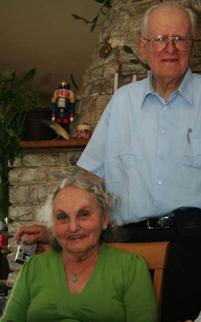
Vanda and Vytautas Sliupas.
Lithuanian officials were courteous to me, until yesterday
See also the below
comments to this post
After the reestablishment of Independence I alone, or occasionally with my wife Vanda, have visited Lithuania 37 times. Until now I was happy to say that everyplace I went, Lithuanian officials were courteous to me, always managed to see me even on short notice, and were respectful. This was until yesterday when I experienced my very first intentional snubbing in Lithuania by Kestutis Kurselis, the relatively new Director of Vytautas War Museum in Kaunas.
As you had written in the 2010 VilNews, during the 600 year anniversary of Zalgiris Battle, my wife and I donated our own work, very large gobellin of the battle, on which we had worked for 15 years.
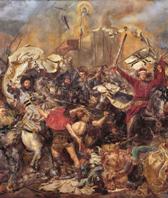
The Zalgiris Battle (1410)
The previous Director of the Museum, dr. Gintautas Surgailis came personally from Kaunas to accept this gift. Subsequently it was displayed for several weeks at the Seimas (Parliament) Building in Vilnius, it was taken on an international tour and finally was properly and respectfully placed in the War Museum. That was when dr. Gintautas Surgailis was the Director.
Lately I was informed by several Lithuanian-American friends that our gift gobellin was no longer being displayed at the Museum. While traveling through Kaunas yesterday I stopped to inquire. As normal to me, I went to see the Director Kestutis Kurselis but his secretary came out twice to inform me that Director will not see me. I was surprised, to say the least, that a mere director of a public museum felt he could brush me off, even though his secretary informed that he was in his office alone.
This was a first brushoff to me in over 20 years of continuous visits to Lithuania. I guess the new generation of government officials have no longer the customary respects. My father, dr. Jonas Sliupas is a three-time recipient of Honorary Doctarate Degrees from the Vytautas Magnus University, located next door to the Museum. This honor is not bestowed upon any other person (even dr. J. Basanavicius is a recipient of only 2 such honors). For the good works performed for Lithuania I have received many '' Thank You's'' from Pres. Valdas Adamkus, dr. Vytautas Landsbergis and many other Ministers of State, and the Siauliai University recently made me an Honorary Member of the Senate. Thus, I was really surprised being treated as a third rank persona-non-grata.
Needless to say, our gift gobellin is now in the Museums storage and there was no assurance given by a Deputy Director as to when, or if, it would be displayed again.
Vytautas Sliupas, P.E.
Burlingame, California
__________________________
Comments:
Rachel Croucher "... Mere director of a public museum"
"Mere" director? Not exactly a respectful attitude to have towards directors of museums all across the country. Nevertheless, although he might have been in his office it is possible he could have been busy on a conference call or many other things. Did you enquire as to why he was unable to meet you?
Aage Myhre "Sending e-mail to Lithuania is like sending it to the black hole of the universe." This was a phrase from a post in VilNews two years ago... https://vilnews.com/?p=5009
Rachel Croucher Last time I was in Lithuania I do recall there being telephones in the country, but nevertheless I have no idea how your link answers any of my questions. So I guess I will just have to assume that no subsequent attempt to confirm whether or not the director actually was busy was made. Not to mention you did not address the use of the offensive term "mere" director.
Arunas Teiserskis if you want to see a "black hole" attitude towards emails, go to Ireland or the UK. There is almost zero possibility somebody from public office, especially at the lower level, i.e., museums, schools, hospitals, etc., will answer your emails. Even companies quite often give no answer at all. The only fail-safe way to communicate there is to call by phone - and in no way you may come in person unscheduled, you'll be dismissed straight away. In this aspect I remember Lithuania as a heaven. On other issues I support Rachel's opinion, that people might be occupied, so if Mr. Sliupas gives no proof that he persistently was snubbed, I would find it quite difficult to believe that this was made deliberately.
Aage Myhre Arunas Teiserskis, bureaucrats and public officials certainly have a tendency, worldwide, to make themselves relatively inaccessible. I was therefore pleasantly surprised when I some days sent an email to a public office in my home country Norway. An automatic reply came immediately up, saying that I would get reply from an executive officer within five days. After four days I got a good and detailed answer
Lina Petrauske But Aage this is the reason why you are moving back to your home country Norway, isn't it? There is no better place than your home place, right? There is no reason to compare with anything else.
Aage Myhre Well Lina Petrauske, I do in fact not have many reasons to complain about Lithuanian bureaucracy either. Except from those terrible days in the 1990s when I had to apply for visas, waiting in Soviet corridors for hours, and when finally being let into the office of the right clerk to know I was lacking one document and had to return next day, as the rules again had changed (there were new rules every year)
Lina Petrauske Then I am sorry I misunderstood you. I have got it a little bit in a different way when reading this post...
Lina Petrauske
Arunas Teiserskis last month i have got an e-mail answer from Cork Revenue office it took them 2 months to answer but still the progress is obvious- they started to do it
Ida Hardy I read the original article but when I went back to re-read it, the link does not take me to it. Can someone please look at that?
Also, if there is some way to prevent your local government workers from turning into cold, uncaring offices with directors who have names but no faces you should do it.
In the US the postal service is known for this attitude, but in my little town there is one post office that has people working there who actually display an attitude of wanting to provide good customer service.
It makes a huge difference! It is the only one Ive been to in any country anywhere that the people actually act like they care about a line getting longer, or that a little old man can't quite lift the package his picking up. I haven't seen that anywhere else.
Rachel Croucher PS that we are not talking about a post office or government office as such your, we are talking about and Museum. There has been no confirmation that the person concerned actually WAS busy with a prearranged appointment of some sort. Let's not jump to conclusions without the facts just because of a tiny little column of barely a few hundred words in this news portal.
Ida Hardy Isn't that museum publicly funded?
Felicia Dalia Prekeris Brown Fact is, NOBODY should receive a "brush-off" from any employee of any public institution, and least of all, should disrespect be shown to a donor. Makes me ashamed of having this bozo countryman acting like a Soviet era muzhik in a supposedly cultured Lithuania. Fire him!
Jon Platakis Unfortunately, this bureaucratic problem exists worldwide. Lietuva is not immune to this problem, just as many other countries. Lietuva is making incremental strides towards the positive. So, let's not make a mountain out of a molehill:)
- Bookmark :
- Digg
- del.icio.us
- Stumbleupon
- Redit it
- Posted by - (0) Comment
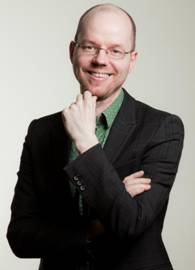
Tallinn professor Rainer Kattel:
Baltic recovery came from outside, not from austerity measures
As the Euro Zone nations sour on austerity, the Baltic States keep taunting them. Professor Rainer Kattel has a different take. He argues that despite harsh austerity measures clocking in at between 8 and 9.5 percent in 2009 alone, the three countries “outsourced” their recovery.
Besides relying heavily on EU structural funds, Kattel explains, they tightly integrated exports with Scandinavia.
“I don’t there is any connection with the recovery,” he says of the austerity programmes.
“The recovery came from outside.”
Read more...
_____________________________

Early last month, a triple suicide was reported in the seaside town of Civitanova Marche, Italy. A married couple, Anna Maria Sopranzi, 68, and Romeo Dionisi, 62, had been struggling to live on her monthly pension of around 500 euros (about $650), and had fallen behind on rent. Because the Italian government’s austerity budget had raised the retirement age, Mr. Dionisi, a former construction worker, became one of Italy’s esodati (exiled ones) — older workers plunged into poverty without a safety net. On April 5, he and his wife left a note on a neighbor’s car asking for forgiveness, then hanged themselves in a storage closet at home. When Ms. Sopranzi’s brother, Giuseppe Sopranzi, 73, heard the news, he drowned himself in the Adriatic.
Read more...
_____________________________
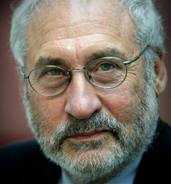
There is a substantial risk that the worst is still ahead of us in crisis-hit Europe, says Nobel laureate Joseph Stiglitz. EU tries to give the impression that things are about to improve in the euro zone, but the numbers in the real economies tell a very different story, according to Stiglitz.
- Spain is in depression. 50 percent of adolescents and 25 percent of the population is without work, and they see no light at the end of the tunnel.
He asks how long young people will accept a system that costs their society so harshly, showing that Europe as a whole still is in recession, five years after the crisis started. Recession is defined as a fall in gross domestic product (GDP) for two or more consecutive quarters.
- In many of the countries, GDP is lower than in 2007. It is clear that the European leaders have failed miserably. I believe this is inexcusable, says Stiglitz.
The American professor has no doubt that the austerity measures have not worked. He believes one must now release the grip and see what can be done to promote growth.
- Bookmark :
- Digg
- del.icio.us
- Stumbleupon
- Redit it
VilNews e-magazine is published in Vilnius, Lithuania. Editor-in-Chief: Mr. Aage Myhre. Inquires to the editors: editor@VilNews.com.
Code of Ethics: See Section 2 – about VilNews. VilNews is not responsible for content on external links/web pages.
HOW TO ADVERTISE IN VILNEWS.
All content is copyrighted © 2011. UAB ‘VilNews’.

 Click on the buttons to open and read each of VilNews' 18 sub-sections
Click on the buttons to open and read each of VilNews' 18 sub-sections 

























































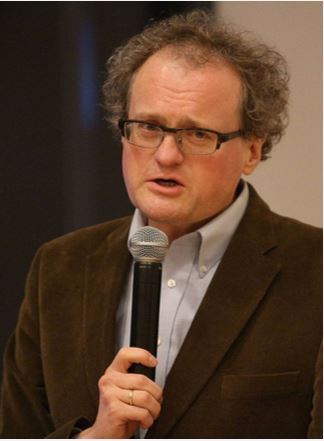
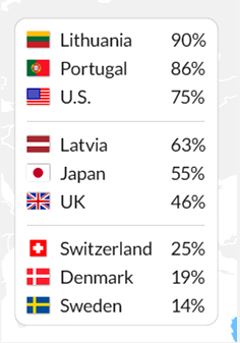
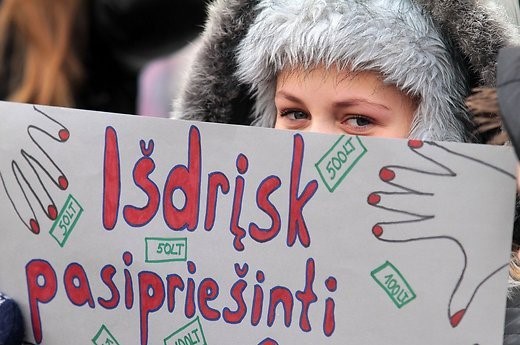


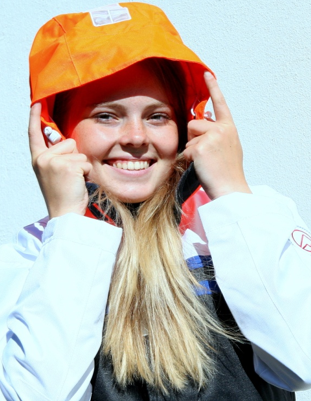
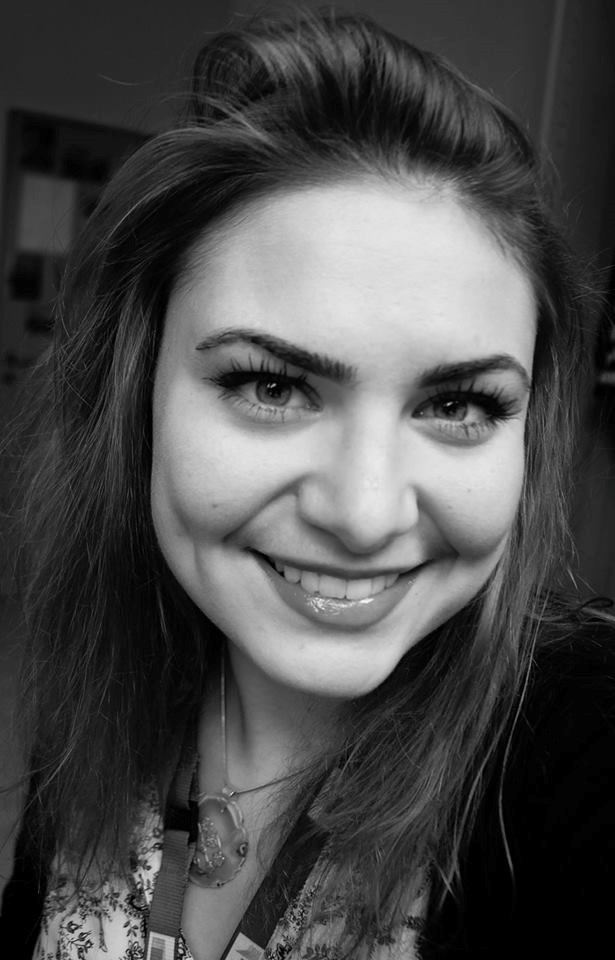
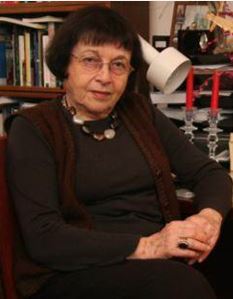
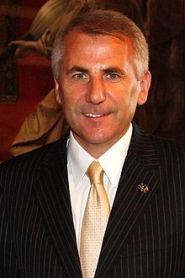
.jpg)
